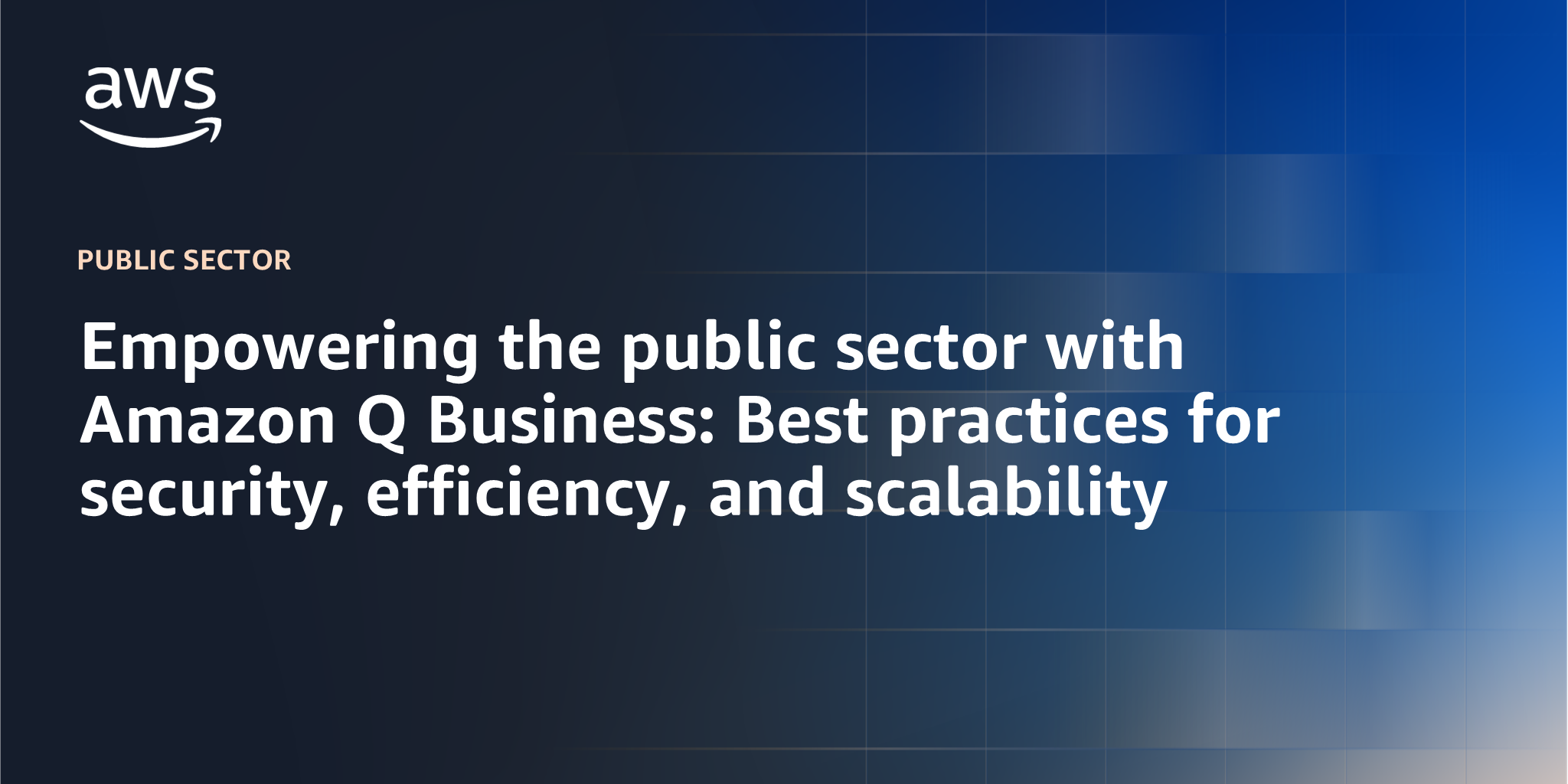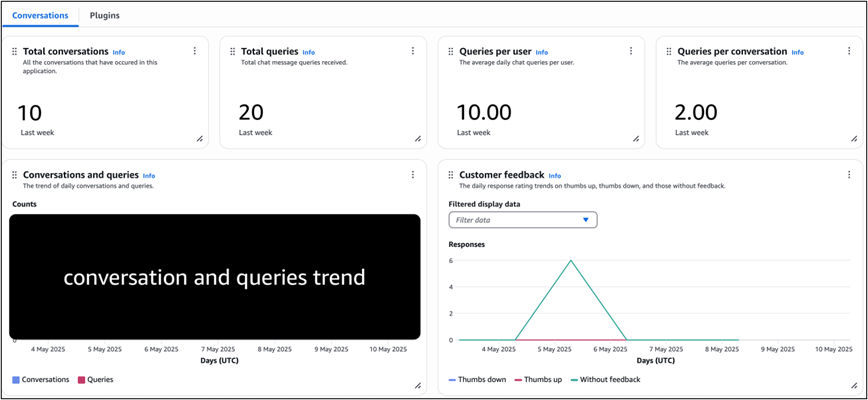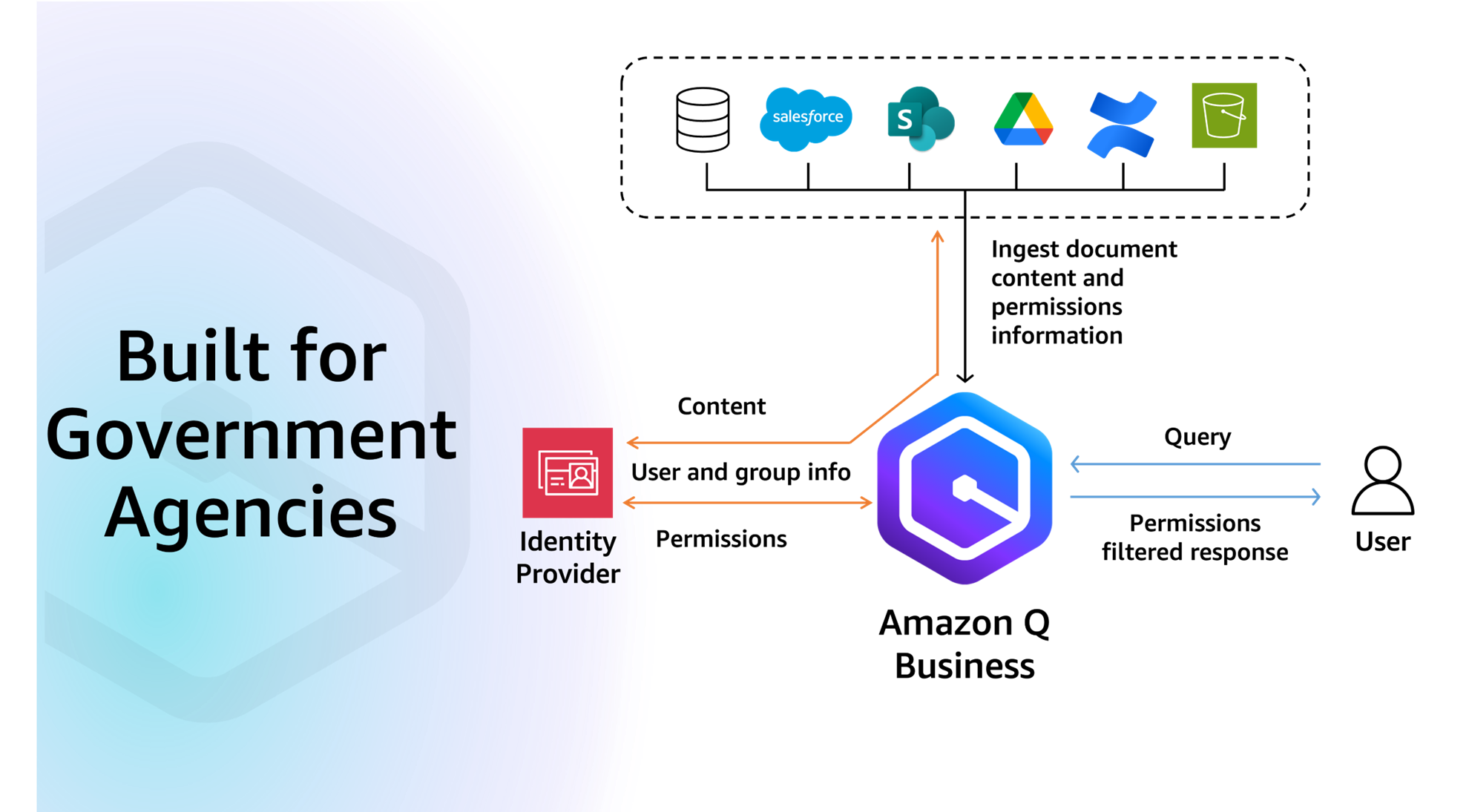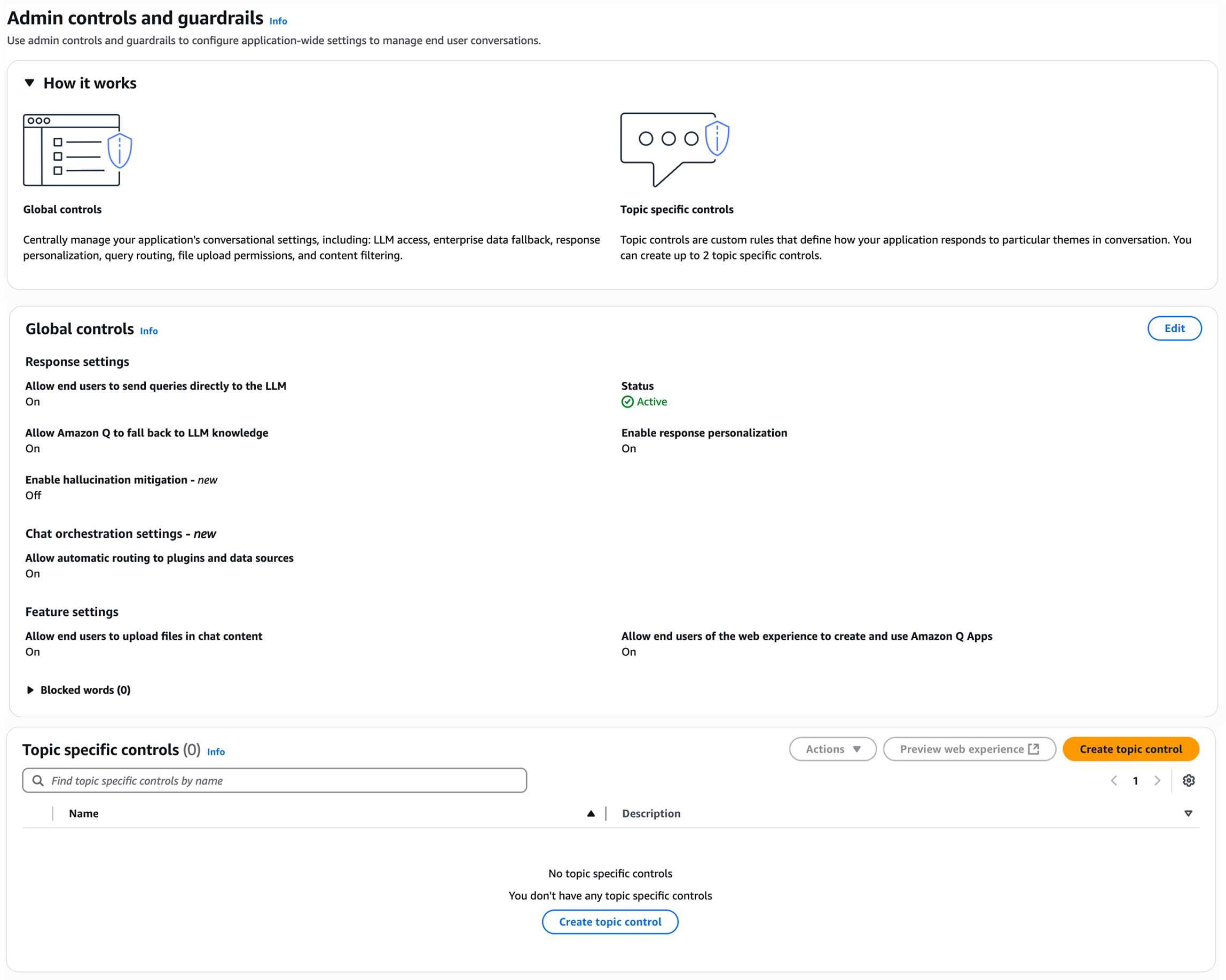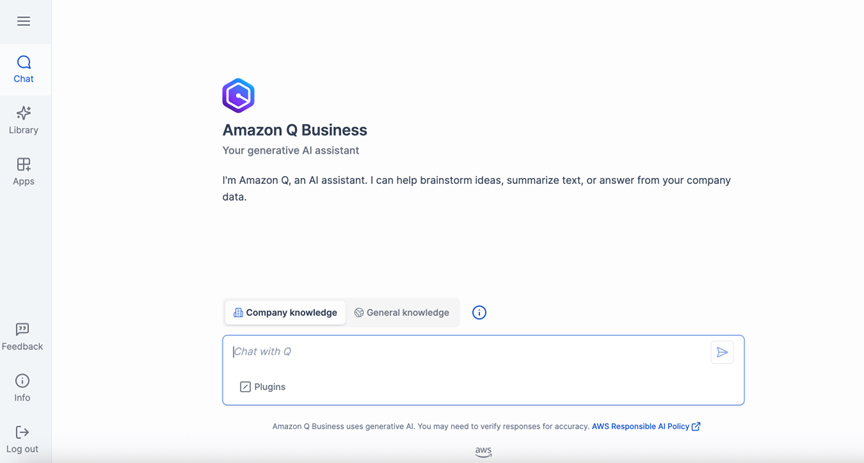AWS Public Sector Blog
Empowering the public sector with Amazon Q Business: Best practices for security, efficiency, and scalability
Public sector service delivery is undergoing a dramatic transformation, driven by increasing citizen expectations and the rapid evolution of digital technologies. From managing large repositories of regulatory documents to providing consistent policy interpretation across departments, the complexity of government operations demands digital solutions that can scale efficiently while maintaining the highest standards of security and compliance.
BCG estimates the productivity gains of generative AI for the public sector will be valued at $1.75 trillion per year by 2033. It reflects productivity gains across all national, state or provincial, and local governments and across all domains such as legislative, administrative, courts, health care, and education. By using generative AI, government agencies can analyze large amounts of data to identify patterns and insights, streamline manual processes, and deliver faster, personalized, more accessible services to citizens while maintaining the highest standards of accuracy and compliance.
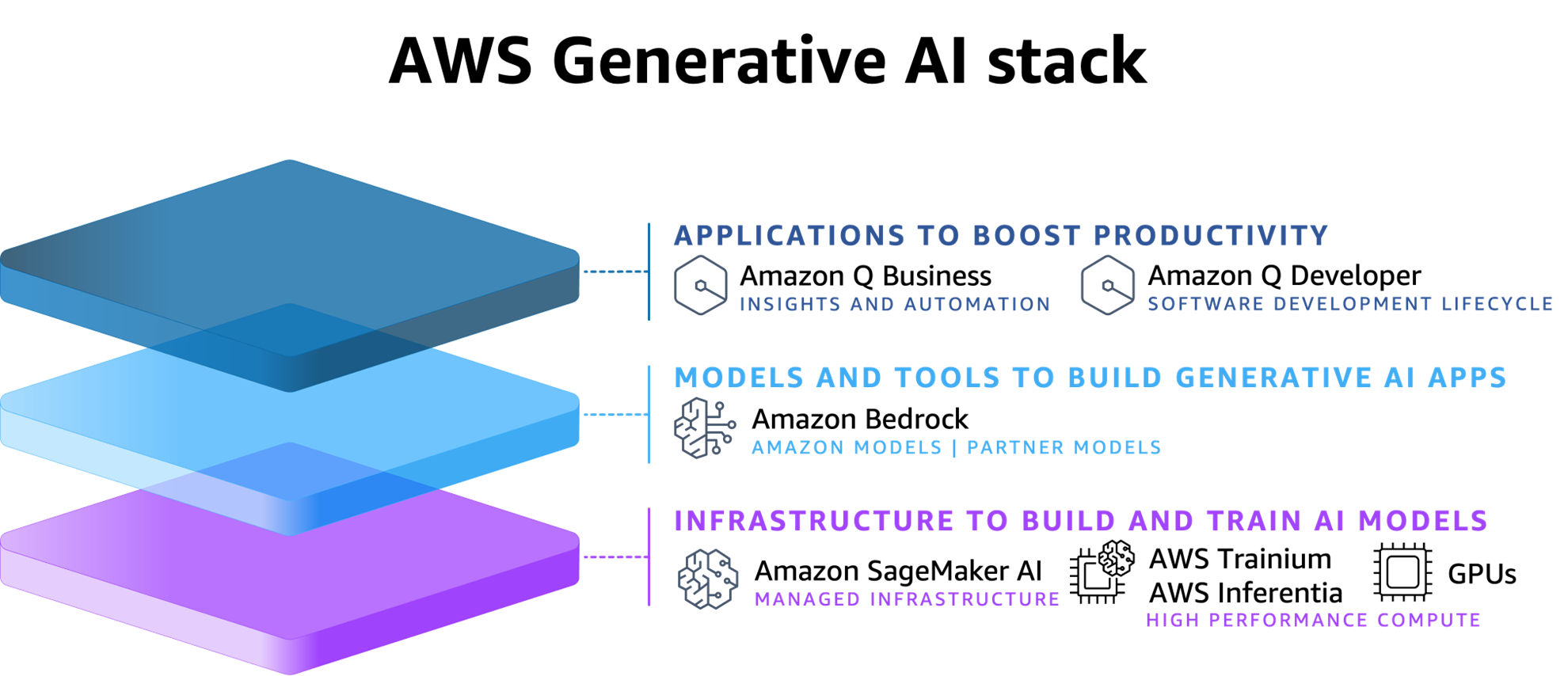
Figure 1. AWS generative AI stack, where Amazon Q Business is one of the productivity- boosting applications
Amazon Q Business is a generative AI–powered assistant from Amazon Web Services (AWS) that you can use to find information, gain insight, and take action at work. It makes generative AI securely accessible to everyone in the government and helps public servants get work done faster by taking advantage of governments’ internal data. Anyone in the agencies can use natural language to request information or assistance to generate content, enhance decision-making processes, improve public services, or create lightweight apps that automate workflows while maintaining strict security protocols and regulatory compliance.
Revolutionizing how the public sector works
At its core, Amazon Q Business is a fully managed, generative AI–powered assistant, eliminating the need to allocate resources to AI model training, server provisioning, or software updates. Built on Amazon Bedrock, the platform inherits enterprise-grade security protocols and compliance standards, such as HIPAA, PCI, and ISO42001.
AWS handles critical backend operations, including:
- Automatic scaling to accommodate demands during peak periods like tax season or public health crises
- Continualous model optimization to improve response accuracy and relevance without manual intervention
- Integrated monitoring through Amazon CloudWatch for real-time performance tracking
Seamless integration with government systems
Amazon Q Business is built for the public sector with more than 40 fully managed connectors to populate data from government systems, databases, and document repositories, including applications like Salesforce, Google Drive, Microsoft OneDrive, Microsoft SharePoint, Slack, Confluence, and Smartsheet—so you can easily access all your data in one place.
Moreover, with Amazon Q Business you can count on the following:
- Respect for existing access controls. Amazon Q Business is built to be secure and private, and it can understand and respect your existing identities, roles, and permissions. If a user doesn’t have permission to access certain data without Amazon Q, they can’t access it using Amazon Q either.
- Your private data is your private data. Amazon Q Business doesn’t use your data—including ingested data, conversation data, and feedback data—to improve underlying models for others.
With these functionalities, Amazon Q Business can integrate with government systems:
- HR departments can provide answers about benefits and policies.
- IT teams can quickly access technical documentation, troubleshooting guides, and create services tickets.
- Legal teams and citizens can search through vast document repositories of regulations and precedents.
“Maximus delivers innovative business process management, consulting services, and technology solutions to enhance public outcomes and boost government program efficiency. Influenced by consumer messaging, the public now values and expects a high level of customer experience when interacting with any organization, including government agencies and those who provide citizen support for those agencies. This demands data from a broad set of sources and an interactive UI. Amazon Q embedded allows us to offer government customers a generative AI assistant powered by over 40 data sources—without the need to build integrations across all of our tools and data stores, and at the high security bar that our customers expect.”
—Derrick Pledger, chief digital and information officer of Maximus, Inc., Derrick Pledger, chief digital and information officer of Maximus, Inc.
Centralized sign-on integration with AWS IAM Identity Center
Government agencies can connect and access Amazon Q Business securely through integration with enterprise identity providers (IdP) and use AWS Identity and Access Management to authenticate users when they sign in to Amazon Q Business. This supports any third-party identity provider that supports SAML 2.0 or OpenID Connect (OIDC) to onboard the users. However, for public sector organizations, AWS IAM Identity Center is the preferred method for connecting Amazon Q Business to enterprise directory services because it provides the following benefits:
- Centralized governance – Users and groups from the government’s directory are synchronized to IAM Identity Center, maintaining the existing organizational structure.
- Scalability – IAM Identity Center supports growth across multiple AWS accounts (such as development, testing, and production accounts), users, and integrations with other AWS services.
- Simplified compliance – Public sector organizations must meet strict compliance requirements, and IAM Identity Center comes with pre-built frameworks like Federal Risk and Authorization Management Program (FedRAMP) and Health Insurance Portability and Accountability Act (HIPAA).
In the integration between enterprise identity providers and IAM Identity Center, the government’s main directory or IdP, which can be Okta, Microsoft Entra ID (formerly Azure AD) or other LDAP-compatible system, manages user accounts and authentication. The identity provider synchronizes users and groups with IAM Identity Center using the System for Cross-domain Identity Management (SCIM) protocol. Any changes in the directory (like new users or group memberships) are automatically reflected in AWS. IAM Identity Center acts as the centralized identity broker within AWS. It receives the synced user and group information from the IdP and manages authentication and access permissions for AWS services, including Amazon Q Business. When users access Amazon Q Business, their authentication and access rights are managed by IAM Identity Center. Users can only see and interact with data and features permitted by their organizational roles and policies.
The following diagram illustrates this integration between enterprise identity providers and IAM Identity Center.
Compliance enforcement
Customer data is always encrypted in transit with a minimum of TLS 1.2. Amazon Q Business automatically enforces data residency rules, encrypts all the data at rest, maintains audit trails through AWS CloudTrail integration, and supports customer managed symmetric encryption using AWS Key Management Service (AWS KMS).
Administrators can apply guardrails to customize and control responses to prevent hallucination. They can improve the responses so they’re relevant and appropriate based on the actual documents and policies.
Natural language interface
Amazon Q Business revolutionizes workforce productivity through its conversational interface with a web experience, which requires no technical expertise. Each government agency can customize each web experience by changing text elements or adding the government agency’s logo.
Amazon Q Business application environments support anonymous access, enabling general citizen interactions with public Q&A portals without authentication barriers.
Scalability and future-proofing the public sector
As public sector organizations continue to modernize, Amazon Q Business provides a scalable foundation for ongoing digital transformation.
Public sector agencies can deploy and manage Amazon Q Business resources using AWS CloudFormation for consistent, repeatable rollouts across environments, and departments. We recommend that you start with a single use case and expand to additional departments or agencies as your needs evolve. The managed, scalable architecture of Amazon Q Business supports this approach. Government agencies can take advantage of consumption-based pricing for anonymous or general public access and subscription-based pricing for internal government servants.
“We embedded Amazon Q Business into our cloud-native platform, reaffirming our commitment to delivering resilient, dependable, and powerful technology to public safety agencies. Amazon Q’s precision in extracting and distilling key insights from complex data empowers law enforcement with quicker access to critical information, supporting real-time situational awareness and operational efficiency.”
—Bob Hughes, CEO Mark43, GovTech Provider of Public Safety Solutions
Getting started
Ready to explore how Amazon Q Business can transform your public sector organization? Here are your next steps:
- Assess your needs – Identify key use cases and potential integration points.
- Contact AWS – Reach out to your AWS account team or the AWS Public Sector team.
- Plan a pilot – Start with a small-scale implementation to demonstrate value.
- Develop a rollout strategy – Create a plan for wider adoption across your organization.
